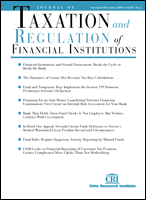BEPS Action 4: Limiting Base Erosion via Interest and Other Financial Payments
Author: Stanley C. Ruchelman.; Sheryl Shah.
Source: Volume 28, Number 04, March/April 2015 , pp.15-27(13)

< previous article |next article > |return to table of contents
Abstract:
According to the Organisation for Economic Co-operation and Development (OECD), there is a tax-induced bias in favor of debt financing that is compounded by tax planning techniques that eliminate tax on interest income in the payee’s jurisdiction. The result is base erosion and profit shifting (BEPS) arising from the placement of deductible interest expense in high-tax jurisdictions and taxable interest income in low-tax jurisdictions. Action Plan 4 of the BEPS project aims to limit base erosion resulting from interest deductions and other financial payments. This article explains how the OECD proposes to encourage multinational groups to adopt funding structures that more closely align the interest expense of individual entities with that of the overall group. Overall, groups would still be able to obtain tax relief for an amount equivalent to their actual third-party interest cost. However, the opportunity to stuff interest expense into companies based in high-tax jurisdictions will be removed. If the OECD effort succeeds, the tax benefits derived through structured financial products marketed by financial institutions and global tax advisory firms will become a relic of the past, and financial institutions may face additional difficulties unique to their specific operations.Keywords: BEPS Action 4; profit shifting; intercompany transactions; interest expense; debt equity; deductible payments; double non-taxation
Affiliations:
1: Ruchelman P.L.L.C.; 2: Ruchelman P.L.L.C..